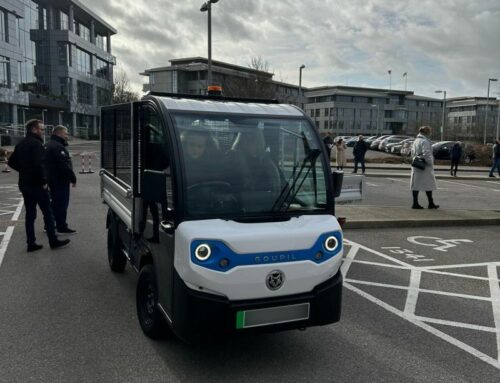SILENT electric vans could lead to deaths on the streets unless drivers adopt noise safety tech.
A newly-released report by the Society of Motor Manufacturers and Traders (SMMT) revealed new registrations of electric vans rose nearly 21% in 2018, and with major UK logistics and retail companies adding EVs to their fleet, the trend looks set to continue.
But dangerously quiet electric and hybrid vehicles could put vulnerable pedestrians in danger.
From July all new models will have to emit a noise when travelling at low speed, however the registration only covers new models registered after September 1 and then new registrations after September 2021.
Chris Hanson-Abbott, of road safety device manufacturer Brigade Electronics, said manufacturers must not wait until the law forces them to make noiseless hybrid and electric vehicles emit life-saving sound.
He said: “There is no doubt the adoption of hybrid and electric vans is great news for the environment and UK air quality.
“But the average person struggles to hear electric and hybrid cars approach at speeds of up to 12.5mph. Quite simply, they are dangerous.”
He pointed to his company’s aftermarket solution, Brigade’s Quiet Vehicle Sounder, that creates sound, decreasing the risk.”
Research by Guide Dogs for the Blind shows electric cars are about 40% more likely to hit a pedestrian than a petrol or diesel vehicle.
Nick Simmons, CEO of Roadpeace, the national charity for road crash victims in the UK, said: “The influx of electric and hybrid vehicles presents a new silent hazard on to our roads of which the majority of our members will not be aware therefore being a significant risk to vulnerable road users.
“Added to this, the fact that the majority of these vehicles are working in urban environments further heightens the risk.
“It is vital that operators and drivers take the necessary steps now to eliminate these risks rather than place pedestrians and fellow road users in unnecessary danger.”
Brigade’s Quiet Vehicle Sounder iproduces a distinctive replacement sound that can be heard clearly in danger zones but less so elsewhere.
The sound is highly directional, enabling a pedestrian to tell where the vehicle is, and it varies in pitch and tone as the vehicle speeds up or slows down.







Leave A Comment